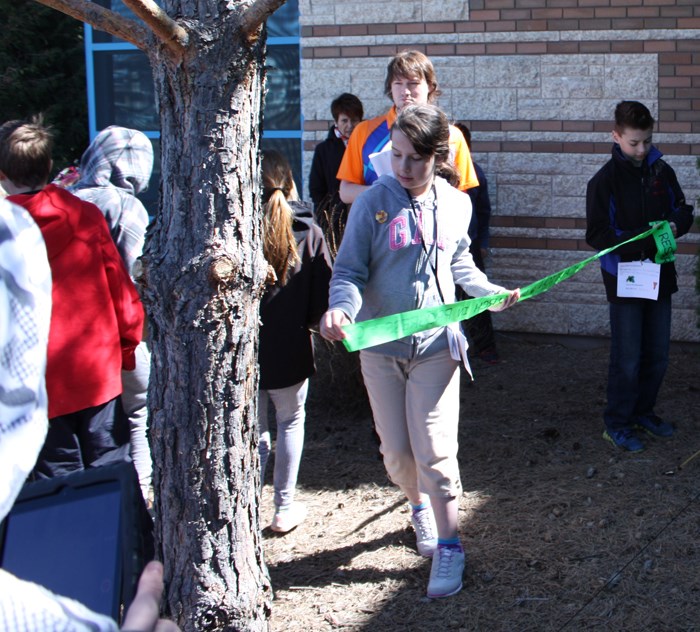A group of Grade 5 students at MC Knoll School are learning about biodiversity and citizen science first hand.
Susan Muir’s class was selected from hundreds of schools across the country to participate in a Biodiversity Institute of Ontario (BIO) project cataloguing Canadian insects from coast to coast.
“We’re really fortunate to have been chosen for the Malaise Trap Program,” Muir said.
A malaise trap is basically a tent without sides. It has a mesh wall that divides the canopy in half and funnels insects up to a hole at top front to which is attached a collection bottle full of ethanol.
The class set its trap in the schoolyard on Monday along with 64 other schools across Canada. They will collect insects for two weeks.
“The program’s goal is to encourage students to explore, question and understand the world around them, starting with their own schoolyard,” states the project website. “Students are introduced to the life of a biologist and the exciting science of DNA barcoding through comprehensive lesson plans which address multiple specific expectations across elementary and secondary curricula.”
And the institute gets invaluable data to add to the Internation Barcode of Life project. At the end of
For Muir, it is part of a learning philosophy.
“I think that any time that I can get my students involved connecting with nature that it’s a good thing because it’s my job to make sure the kids learn about the world around them,” she said.
“I think when the kids can have a hands on approach to learning, to learn about biodiversity by actually examining the insects and examining the insects across Canada is so much better than just reading about biodiversity.”
At the end of the two weeks, they will ship their bugs to Guelph where their DNA will be barcoded. The information will be returned to the school for
Each of the students has a specific job. Caelen MacLean is one of the media liasons.
It’s important to do this research because we’re helping people at BIO to discover new insects across Canada that haven’t been found yet.
She pointed out that in the two years since the project started BIO researchers have identified 700 new species from insects collected by elementary schools.
Another of the media liaisons, Thea Weeks, explained that insect biodiversity is important to the food chain.
“Most of them [insects] help out a lot, for instance bees, they help pollinate and they help grow flowers,” she said.
Aside from the learning, there is a lot of excitement associated with the project and the kids are excited about discovering an undocumented insect.
“We probably will because there’s lots of different insects in Canada that haven’t been found and I think we can find a few of them,” said Jenna Schmidt, another media liaison.
Muir is more low key about it than her students, but also thinks chances are pretty good.
“Since 2013, so only the last two years, they’ve already found 700 new species just from this school program, so I think we have a pretty good chance of coming up with at least one new species,” she said.
At least two members of the class also have interests in the project outside of school. This summer Ethan Kirby is getting a bee hive and is going to keep bees in his back yard. He said bees are a big concern because many are becoming endangered which could compromise the entire food chain.
“If bees go extinct, plants won’t grow and there won’t be any fruits or vegetables for animals to eat,” he said.
Jaron Weinmaster is interested in DNA barcoding because he is passionate about marine biodiversity. He hopes that by learning about DNA barcoding through the malaise trap project, he will be able to apply it to marine life in the future.



